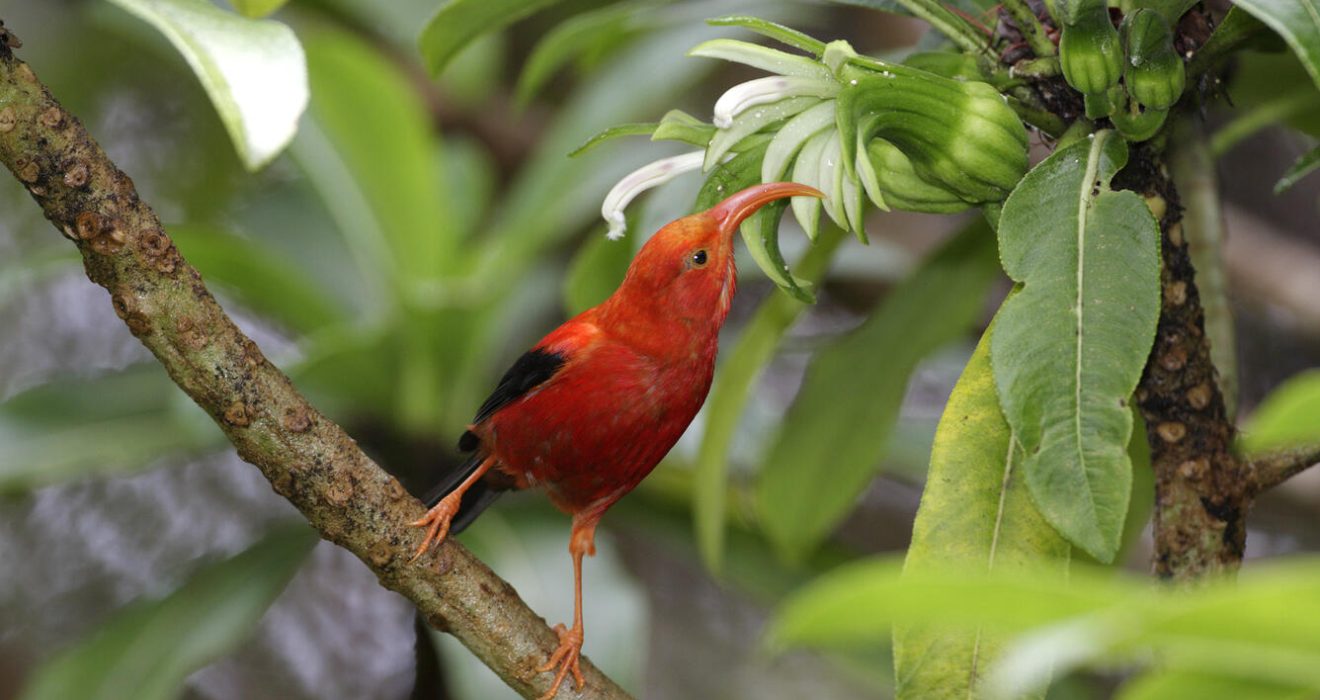Hawaii’s native honeycreeper birds are in danger of extinction owing to avian malaria, which is spread by alien mosquitos. Conservationists have launched a daring plan of releasing several million mosquitoes treated with sterilizing bacteria in an attempt to reduce mosquito numbers and save these endangered birds. This article investigates the issues confronting Hawaii’s honeycreepers, the inventive solutions being applied, and the global ramifications for conservation efforts.
Danger to Hawaii’s Honeycreepers:
Hawaii’s honeycreepers, known for their brilliant hues and various beaks tailored to different diets, emerged in isolation for millions of years. However, their remoteness made them vulnerable when mosquitos carrying avian malaria arrived on the islands in the nineteenth century. Unlike mainstream bird species that have gained immunity against malaria over the years, Hawaii’s honeycreepers have no natural defenses. A single-biting mosquito can be lethal, resulting in a catastrophic fall in honeycreeper species across the islands.
Avian malaria has caused widespread harm. Thirty-three honeycreeper species have already become extinct, and many of the remaining 17 species are extremely endangered. Without quick intervention, some species may become extinct within a few years.
Assessing Avian Malaria’s Effects:
Avian malaria, which is prompted by the Plasmodium parasite and spread by mosquitos of the Culex genus, presents a unique problem for Hawaii’s endemic birds. The parasite flourishes in warmer temperatures, forcing honeycreepers to higher altitudes where cooler temperatures have previously prevented mosquitoes from spreading. However, as climate change raises temperatures, mosquitoes are advancing into higher altitudes, carrying avian malaria with them and potentially endangering honeycreepers’ survival.
Honeycreepers are particularly susceptible to avian malaria. If bitten by an infected mosquito, species such as the ‘i’iwi (scarlet honeycreeper) die at a stunning 90% rate. This vulnerability highlights the critical need for novel conservation techniques to alleviate the effects of this lethal disease.
Incompatible Insect Technique (IIT):
The incompatible insect technique (IIT) is at the forefront of conservation efforts for Hawaii’s honeycreepers. IIT, which was developed as a biological control method, entails releasing a large quantity of sterile male mosquitos into the environment. These mosquitoes have Wolbachia, a bacteria that prevents them from producing viable progeny when mated with wild females. As a result, the number of mosquitoes gradually decreases over time, lowering avian malaria transmission to susceptible honeycreepers.
The deployment of incompatible insect techniques (IIT) in Hawaii is a sophisticated and painstakingly planned process. Millions of sterile male mosquitoes are distributed around the islands by helicopter, with a focus on important regions wherein honeycreepers are most vulnerable. This focused method attempts to reduce mosquito numbers while allowing habitat for honeycreepers to flourish and recover.
Barriers to Conservation:
Despite its potential, the IIT strategy involves several problems and considerations. One major concern is that mosquitoes may acquire resistance to Wolbachia gradually, reducing the technique’s effectiveness. Ongoing study and monitoring are required to tailor the method to changing population dynamics and environmental circumstances.
Logistical obstacles abound in Hawaii’s rough and geographically diversified landscape. To ensure that sterilized mosquitoes are distributed effectively over distant islands, numerous stakeholders, including government departments, conservation entities, and local communities, must work together. Public involvement and education are essential for gaining support for conservation initiatives and developing a better knowledge of the ecological significance of Hawaii’s native species.
Scientific Study and Reactive Management:
Scientific study is the cornerstone of Hawaii’s honeycreeper preservation initiatives. Researchers track populations of mosquitoes, avian malaria transmission paces, and honeycreeper numbers to evaluate the impact of IIT and develop adaptive management measures. Advances in DNA sequencing and disease surveillance equipment allow scientists to follow the development of avian malaria and discover viable therapies to safeguard endangered bird species.
Long-term monitoring is required to assess the success of IIT and handle emergent issues like climate change and invading species. Hawaii’s conservationists work to preserve the biodiversity of these distinctive islands for generations to come by combining scientific research and on-the-ground conservation initiatives.
Cooperation and Stakeholders Involvement:
The preservation of Hawaii’s honeycreepers necessitates collaboration among a variety of stakeholders, including government organizations, non-profit groups, academic institutions, and the local population. The Birds, Not Mosquitoes project shows this collaborative approach by combining skills and resources to execute and improve conservation efforts.
Stakeholder Involvement is critical for forming partnerships, obtaining funding, and rallying support for conservation efforts. Community outreach initiatives educate people about the condition of honeycreepers and the need to maintain Hawaii’s natural heritage. By cultivating a common sense of management, stakeholders help to ensure the long-term viability of conservation activities and encourage cohabitation between human beings and wildlife.
Potential Futures and Challenges:
Looking ahead, the prospects of Hawaii’s honeycreepers are unknown but promising. Continued funding for research, technological advances, and novel conservation techniques will be required to address the risks caused by avian malaria and changing climates. Adaptive management systems will allow conservationists to adapt quickly to changing environmental circumstances and emergent threats.
The persistence of Hawaii’s honeycreepers serves as a beacon of hope in the face of declining biodiversity and habitat degradation. By maintaining these unique species, Hawaii not simply protects its natural history but also emphasizes the interconnectivity of the ecosystem and the importance of worldwide conservation efforts.
Conclusion:
To summarize, the dispersal of millions of mosquitos in Hawaii as an element of a conservation effort is a brave but important move toward protecting the islands’ threatened honeycreepers from avian malaria. Conservationists are working to restore harmony to Hawaii’s fragile natural environments and safeguard the existence of these unique bird breeds using novel ways such as the incompatible insect methodology.
Hawaii leads the way in worldwide conservation efforts by encouraging cooperation, technological advances, and public participation. The lessons acquired from Hawaii’s honeycreeper preservation project can be applied globally to combat biodiversity loss and protect fragile ecosystems.

